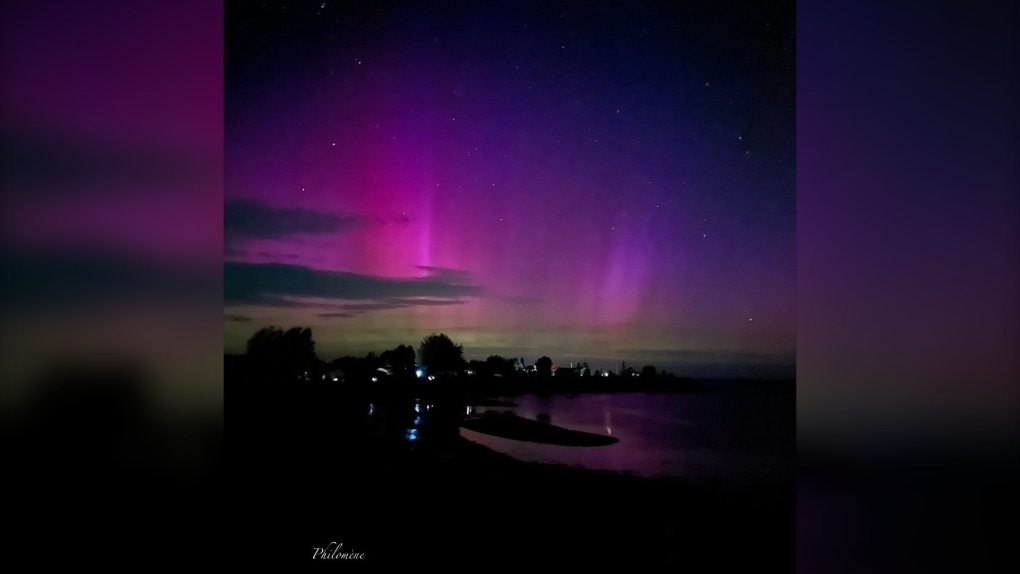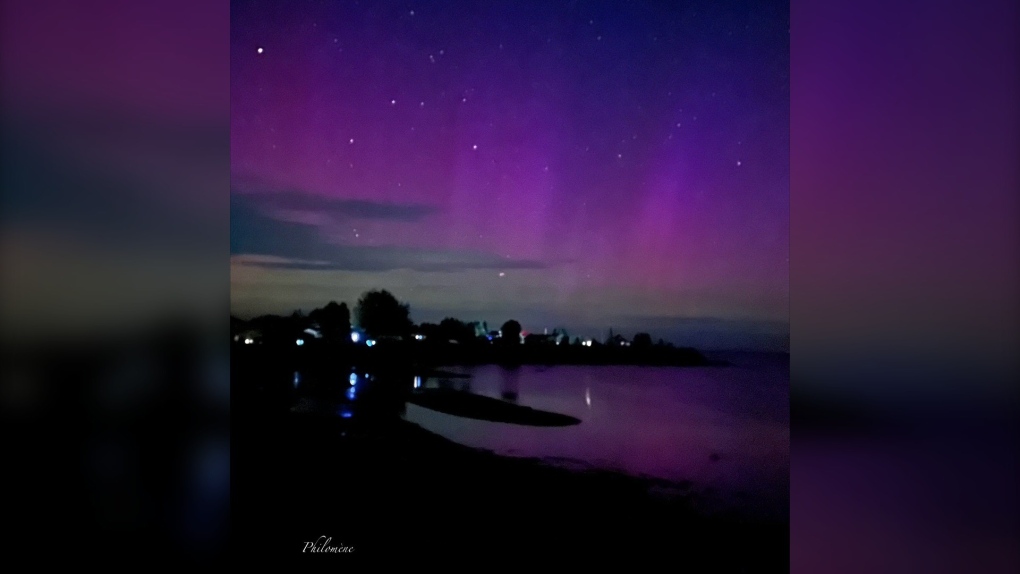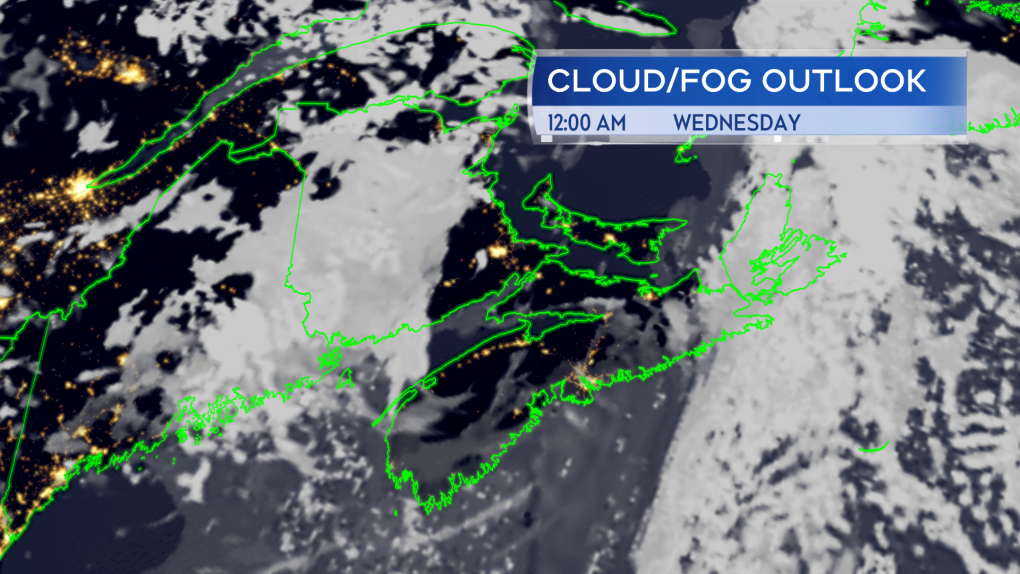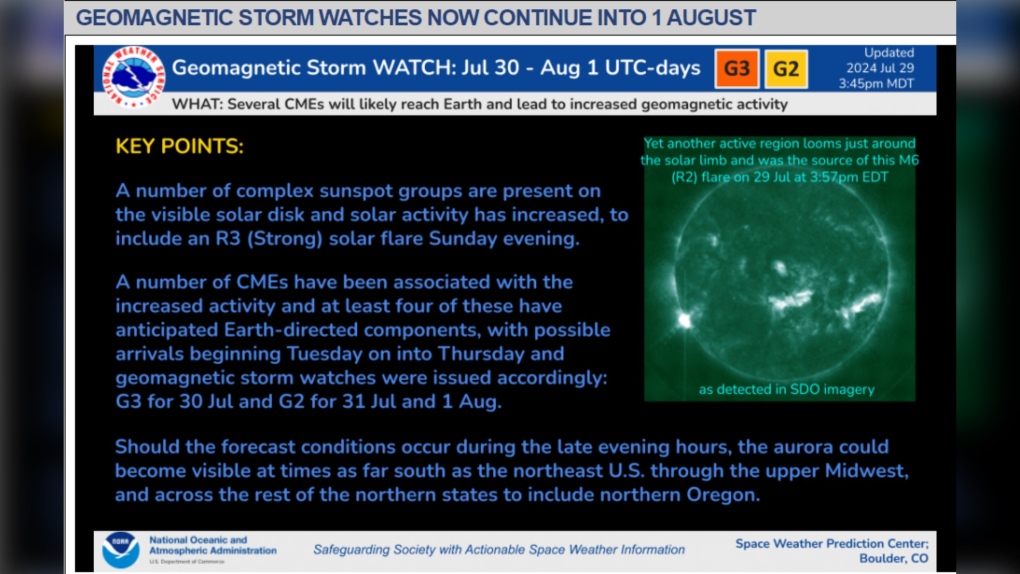Aurora glimpsed in the Maritimes late Monday night; possible again Tuesday night
 Aurora borealis shines in Muskoka, Ont on May 11, 2024 (Courtesy: Andrew Watson).
Aurora borealis shines in Muskoka, Ont on May 11, 2024 (Courtesy: Andrew Watson).
Aurora spotted in the Maritimes
It was faint and near the horizon but the Aurora Borealis was visible in a few parts of the Maritimes late Monday night.
These pictures below were shared with me by Philomene Breau O’Connor who took them between midnight and about 1:30 a.m. The pictures taken at Cameron Beach, Port Howe, Nova Scotia.
Aurora activity is forecast to be high Tuesday night and Wednesday night of this week.
 A picture of the aurora near the northern horizon from Port Howe, N.S., late Monday night.
A picture of the aurora near the northern horizon from Port Howe, N.S., late Monday night.
 A picture of the aurora near the northern horizon from Port Howe, N.S., late Monday night.
A picture of the aurora near the northern horizon from Port Howe, N.S., late Monday night.
Viewing conditions
Partly cloudy Tuesday night with fog patches developing after midnight.
The North Shore of Nova Scotia, Cape Breton, P.E.I., and eastern coastal areas of New Brunswick are all good candidates for glimpsing the aurora should it make a further appearance tonight.
Similar viewing conditions are expected Wednesday evening. Cloud increases and showers develop overnight Wednesday into Thursday morning.
Best to get away from city lights and find as much of an unobstructed view of the northern horizon as possible. It is likely you will need to be patient and that the aurora will appear only faintly close to the horizon. If you get some pictures of the aurora this week, I’d love to see and share them. They can be sent in to kalin.mitchell@bellmedia.ca.
 Partly cloudy and with fog patches developing tonight. Areas that might have a better shot of glimpsing the aurora, if present, include northern/eastern New Brunswick, northern Nova Scotia, and Prince Edward Island.
Partly cloudy and with fog patches developing tonight. Areas that might have a better shot of glimpsing the aurora, if present, include northern/eastern New Brunswick, northern Nova Scotia, and Prince Edward Island.
Cause of the active aurora this week
The Space Weather Prediction Center branch of the National Oceanic and Atmospheric Administration attributes a recent series of ejections of solar matter from the sun (coronal mass ejections) as the cause of the increase in aurora.
As that solar matter collides with Earth’s magnetic field, it creates a geomagnetic storm.
Geomagnetic storms are rated on a scale of G1 (minor) to G5 (extreme). A G2/G3 storm is usually enough to get a faint visible aurora low on the northern horizon here in the Maritimes. The storm that produced the bright, overhead aurora in the Maritimes this past May was rated as G5 (extreme) in strength.
 Geomagnetic storm watch
Geomagnetic storm watch
CTVNews.ca Top Stories

Mark Carney reaches out to dozens of Liberal MPs ahead of potential leadership campaign
Mark Carney, the former Bank of Canada and Bank of England governor, is actively considering running in a potential Liberal party leadership race should Justin Trudeau resign, sources tell CTV News.
'I gave them a call, they didn't pick up': Canadian furniture store appears to have gone out of business
Canadian furniture company Wazo Furniture, which has locations in Toronto and Montreal, appears to have gone out of business. CTV News Toronto has been hearing from customers who were shocked to find out after paying in advance for orders over the past few months.
WATCH Woman critically injured in explosive Ottawa crash caught on camera
Dashcam footage sent to CTV News shows a vehicle travelling at a high rate of speed in the wrong direction before striking and damaging a hydro pole.
A year after his son overdosed, a Montreal father feels more prevention work is needed
New data shows opioid-related deaths and hospitalizations are down in Canada, but provincial data paints a different picture. In Quebec, drug related deaths jumped 30 per cent in the first half of 2024, according to the public health institute (INSPQ).
Rideau Canal Skateway opening 'looking very positive'
As the first cold snap of 2025 settles in across Ottawa, there is optimism that the Rideau Canal Skateway will be able to open soon.
Much of Canada is under a weather alert this weekend: here's what to know
From snow, to high winds, to extreme cold, much of Canada is under a severe weather alert this weekend. Here's what to expect in your region.
Jimmy Carter's funeral begins by tracing 100 years from rural Georgia to the world stage
Jimmy Carter 's extended public farewell began Saturday in Georgia, with the 39th U.S. president’s flag-draped casket tracing his long arc from the Depression-era South and family farming business to the pinnacle of American political power and decades as a global humanitarian.
'A really powerful day': Commemorating National Ribbon Skirt Day in Winnipeg
Dozens donned colourful fabrics and patterns Saturday in honour of the third-annual National Ribbon Skirt Day celebrated across the country.
Jeff Baena, writer, director and husband of Aubrey Plaza, dead at 47
Jeff Baena, a writer and director whose credits include 'Life After Beth' and 'The Little Hours,' has died, according to the Los Angeles County Medical Examiner.

































